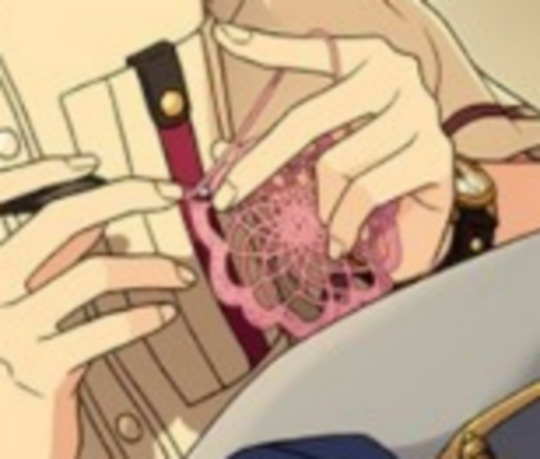#DC-DC converter
Explore tagged Tumblr posts
Text
DC-DC converter, high power lighting, High speed LED driver circuit
100 - 277Vac, 180W, 100 - 1800mA, 50-144V, [DALI 2], IP66 LED Driver
0 notes
Text
LMZ21701SILT Nano Module: Key Features and Specifications
The LMZ21701SILT is a compact nano power module from Texas Instruments, designed to simplify the power supply needs of small electronics. With its tiny footprint and efficient performance, it is ideal for space-constrained applications that require a reliable and efficient voltage regulator.
What is the LMZ21701SILT Nano Module?
The LMZ21701SILT is a step-down DC-DC converter (also known as a buck converter) that integrates several key components into a single module. This includes the controller, inductor, and passives, making it a plug-and-play solution for power management.
This nano module can output 1A of continuous current with input voltages ranging from 2.7V to 17V, while regulating the output voltage down to as low as 0.9V. Its small size, along with its built-in components, allows for a reduced component count and simplified design process, which is particularly beneficial for engineers working on compact devices.
Key Features of LMZ21701SILT
1. Tiny Form Factor
One of the standout features of the LMZ21701SILT is its incredibly small size. Measuring just 3mm x 3.8mm, it is perfect for applications where space is at a premium, such as wearables, portable electronics, and Internet of Things (IoT) devices.
2. High Efficiency
This nano module boasts an impressive efficiency of up to 90%, making it an energy-efficient choice for designs that prioritize low power consumption. The module's efficiency remains high across a wide range of loads, further enhancing battery life in portable applications.
3. Adjustable Output Voltage
The LMZ21701SILT allows for adjustable output voltages from 0.9V to 6V, giving designers flexibility when selecting the operating voltage for their devices. This feature enables its use in diverse applications, from powering low-voltage microcontrollers to supplying voltage to communication modules.
4. Integrated Protection Features
To ensure reliability, the LMZ21701SILT includes several protection features:
Thermal shutdown to prevent overheating.
Short circuit protection to safeguard against faults.
Overcurrent protection to handle excessive loads.
These built-in protections help extend the life of the device while preventing damage to the overall system.
5. Low Ripple and Noise
The module is designed to produce minimal output ripple and noise, which is critical for sensitive applications like medical devices, precision instrumentation, or audio equipment, where clean power is a necessity.
Applications of LMZ21701SILT
1. Portable and Wearable Devices
Thanks to its compact size and high efficiency, the LMZ21701SILT is ideal for wearables, smartphones, and other portable gadgets. Its small footprint allows it to be used in space-constrained designs, while its efficiency extends battery life.
2. Industrial Sensors and IoT Devices
In IoT applications, where devices are often deployed remotely and run on battery power, the low power consumption and versatility of this module make it a suitable choice. It ensures that sensors and other IoT nodes can operate efficiently for extended periods without frequent battery replacements.
3. Consumer Electronics
Consumer devices like smart home products, audio systems, and digital cameras can benefit from the LMZ21701SILT. It ensures stable power delivery with low noise, which is essential for devices that require consistent performance.
4. Embedded Systems
This module is also useful in embedded systems, where compact and reliable power delivery is crucial. Its adjustable output voltage makes it a versatile option for powering microcontrollers, communication modules, and other components in embedded designs.
Specifications at a Glance
Input Voltage Range: 2.7V to 17V
Output Voltage Range: 0.9V to 6V
Output Current: Up to 1A
Efficiency: Up to 90%
Package Size: 3mm x 3.8mm
Protection Features: Thermal shutdown, short circuit protection, overcurrent protection
Operating Temperature Range: -40°C to 125°C
Conclusion
The LMZ21701SILT Nano Module is a powerful and compact solution for efficient power management. Its tiny form factor, high efficiency, and integrated protection features make it an excellent choice for modern electronics that require reliable and space-saving power solutions. Whether you're working on wearables, IoT devices, or embedded systems, the LMZ21701SILT offers the flexibility and performance you need to create cutting-edge designs.
0 notes
Text
https://www.futureelectronics.com/p/semiconductors--analog--regulators-reference--switching-regulators/lm2594dadjr2g-onsemi-1747625
Automotive switching regulator, DC-DC Converter, integrated circuits
LM2594 Series 40 V 165 kHz 0.5 A SMT Step-Down Switching Regulator - SOIC-8
#onsemi#LM2594DADJR2G#Regulators & References#Switching Regulators#Automotive#DC-DC Converter#integrated circuits#On and off switch#voltage converter#power regulator#circuit#what is a switching regulator#voltage regulator
1 note
·
View note
Text
The Global DC-DC Converter Market was valued at $4,900 Million in 2022 and is estimated to grow from $5,300 Million in 2023 to $6,400 Million by 2027 at a CAGR (Compound Annual Growth Rate) of 5.1% during forecast period. The market is driven by various factors, such as increasing power consumption and increasing industrial automation. Increasing power consumption throughout various industries and increasing applications in the industrial sector are most likely to drive the market for DC-DC converters. Asia Pacific, Europe, and North America are witnessing a thriving telecommunications industry, which will increase the demand for DC-DC Converters Industry. DC-DC converters are also turning out to be major electrical components in the automotive industry, which will rise with the rise in the electric vehicle market of the automotive industry across various regions.
#DC-DC Converter#DC-DC Converter Market#DC-DC Converter Industry#Global DC-DC Converter Market#DC-DC Converter Market Companies#DC-DC Converter Market Size#DC-DC Converter Market Share#DC-DC Converter Market Growth#DC-DC Converter Market Statistics
0 notes
Text
LED power supply, DC-DC converter, LED Chip, light controller replacement
100 - 277Vac, 320.16W, 13340mA, 12-24V, [Potentiome…], IP65 LED Driver
#MEAN WELL#HLG-320H-24A#Constant Current AC/DC LED Drivers#12w led driver circuit#LED Lighting#led power module#indoor lighting#DC-DC#LED Driver Modules#LED power supply#DC-DC converter#LED Chip#light controller replacement
1 note
·
View note
Text
Danny goes to a new School
So! When Danny got expelled from his High School, it wasn't really a big Suprise. He had missed for too many days or just walked out in the middle of Class, and his grades were lower than anyone else in the school. It was just a matter of time really.
When confronted by his Parents, he had just claimed that it was the constant ghost attacks getting to him (not a total lie) and that he was sorry.
Well, his parents tried to help.
After hearing about his supposed Fear of Ghosts, they decided that it was a good idea for him to go to school somewhere outside of Amity Park, so he could focus on his Schoolwork and not be distracted by the constant Attacks.
Of course no School wanted to accept a problem student like Danny, so they were forced to look into alternative schools to find one that would accept him. And they did! So they had Danny pack his bags, promise to call regularly, and shipped him off to his new School.
HIVE Academy.
#Dpxdc#Dp x dc#Dcxdp#Dc x dp#Danny Phantom#Dc#Dcu#HIVE Academy#Danny goes to HIVE Academy#Suprisingly they have an actual School System at the Academy#The Headmistress would not have her students be undereducated#They were Villains not Savages#This takes place before Brother Blood ever takes over the School#Danny actually really loves his new School#He was accepted because he was seen as a troublemaker who could easily be converted into a Villain with Ghost Hunter training#I mean he was raised by Ghost Hunters so he must have been trained for it right?#So nobody knows about his Powers#They think he's just a really good Ghost Hunter#Danny mostly keeps his head down#He will occasionally commit a major crime or go on a mission for extra credit#But that's the extent of it#The Titans are extremely confused
2K notes
·
View notes
Text
Choosing the Right DC-DC Converter Module for Your High Voltage Power Supply Needs
Selecting the appropriate power supply solution is crucial for the efficient operation of your electronic devices. With numerous options available, it can be challenging to determine which DC-DC converter module is best suited for your high voltage power supply needs. In this blog post, we will guide you through the process of choosing the right DC-DC converter module by considering important factors and understanding the benefits of using these modules.
0 notes
Text

SOMETIMES ALL I THINK ABOUT IS YOU
LATE NIGHTS IN THE MIDDLE OF JUNE
#guess what song i listened to 150 times last night haha ur never gonna guess#ive been converted into a glass animals fan (special thanks too oomf for that)#anyway TIMKON TIMKON I MISS THEM I MISSED DRAWING THEM#the file is literally named hungry victorian child eating a pizza#big sorry to friends who see me post about this song for the 100th time#timkon#tim drake#kon el#conner kent#robin#red robin#superboy#dc#dc comics#art#my art#doodle
1K notes
·
View notes
Text


Red Nightwing suit appreciation post ❤️🪽
#don’t get me wrong I LOVE the blue suit#but how epic would it be if the suit was red bc then he’d be matching with like everyone else in the family#Batfamily having a red/black scheme would be epic#like most of the superfamily has a matching color scheme why don’t the bats!!#we’re already mostly there we just need to convert dick and Stephanie and then boom we’ve got a family-picture worthy assembly of vigilante#anyway that’s my rant#dc#dc comics#bruce wayne#batman#batfamily#dick grayson#batfamily headcannons#jason todd#tim Drake#Damian Wayne#stephanie brown and jason todd
617 notes
·
View notes
Text
The best way to imagine the Wayne clan, at least for me, is like this:
Thomas’ side of the family
Martha’s side:


#bruce really stood no chance huh#thomas wayne#martha wayne#Alfred gets along with Martha’s side better bc they just never talk#they call bruce once every 10 years to convert him to militarism and he refuses#dc comics#dc#text#batman
643 notes
·
View notes
Text
#DC-DC Converter#DC-DC Converter Market#DC-DC Converter Industry#DC-DC Converter Market in USA#DC-DC Converter Market In North America#DC-DC Converter Market In Europe#DC-DC Converter Market In Asia Pacific#DC-DC Converter Market In South America#DC-DC Converter Market In Middle East and Africa
0 notes
Text

For best lighting output, go for the best LED bulbs in New Zealand
Wellforces Ltd. is known for offering finest LED bulbs from best global manufacturers that possess truly superb lighting quality and are an outstandingly efficient replacement for traditional incandescent bulbs. These LED bulbs also possess excellent heat dissipation and are compliant with CE & RoHS. These bulbs can last for close to 25,000 hours and comes with 3 years warranty.
You can contact us at 064 0800-88-87-86 or visit our website: https://wellforces.co.nz/products/beghelli-led-b15-candle-bulb-4w-frosted
0 notes
Text


so i did end up making his silly little doily. it's not terribly difficult but i'll put what i did under the cut
chain 4, slst into first chain to create a circle
chain 3/chainless dc/stacked sc (your choice, i do chainless dc personally i think it looks best) in the ring. 11 more dc in the ring. slst into 3rd chain/first stitch
chain 1, sc in the same stitch, ch3, sc in next stitch around, slst into first sc
slst to the middle of the next space, ch1 and sc in the space. ch4 and sc into the next space all the way around
continue to repeat the previous rounds adding one chain to each space until you reach 8 chains (slst to the middle of the space, ch1 and sc in the space, chain x, sc in the next stitch around, slst into first sc)
slst one into the next space, ch3/chainless dc/stacked sc to begin the first petal, 7 more dc in the space, slst into next sc, 8dc in next space, slst into next sc around. slst into the final sc from the previous round and tie off.
#shay speaks#enstars#ensemble stars#shu itsuki#crochet#crochet lace#its not hard at all its. pretty much exactly what it looks like#i did it with crochet thread 10 metallic + 1.8mm hook but it should easily convert up#it only took me like 20 minutes to work up so have fun!#i tried doing 9 dc in the petals but that looked too overpacked. you can try it if you'd like though#my thread being metallic probably is not helping with the curling at all but it was really bad with the 9dc instead of 8
94 notes
·
View notes
Text
Me: *starts explain a bunch of canon lore for DC*
My mom: "Holy shit. None of that happened in the (live-action) Batman movies."
Me: "Exactly!"
~10 minutes later~
Me: "And then this wild thing happened!"
My mom: "Of course it did 😑"
#no i did not convert her towards readings comics#she also can't tell the difference between marvel and dc characters#she is incredibly intelligent but i get my issues with name recognition from her
66 notes
·
View notes
Text

also, since this is a redraw and the original drawing was the first sticker i ever put up (and the first one i ever bought, too, lol), you can get this sticker here.
#dc#dc comics#fanart#bart allen#impulse#i bought a bunch of impulse comics and i'm gonna have to make a box for them at some point#so mostly i'm putting this up for myself again#the colours are a bit different than the first time i posted this drawing#bc i had to convert it from rgb to cmyk#but i still think it looks nice
226 notes
·
View notes
